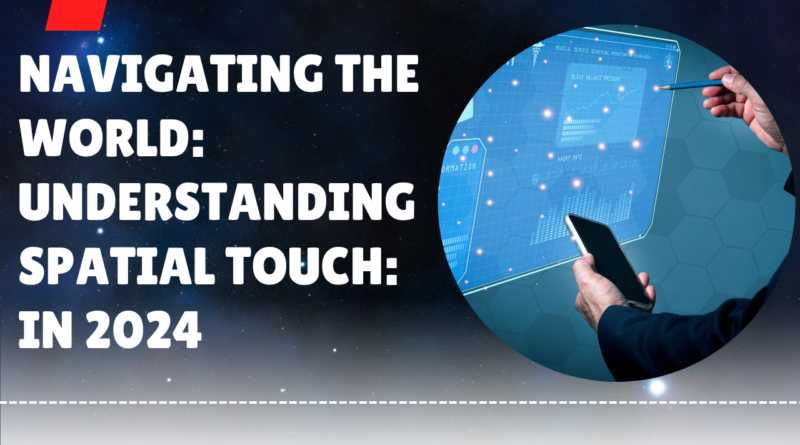Navigating the World: Understanding Spatial Touch
Spatial touch refers to the perception of touch or tactile sensations in relation to the position. And movement of body parts in space. It involves the integration of tactile information with proprioceptive. (sensory feedback regarding the position and movement of the body) and kinesthetic (sensory feedback about the position and movement of muscles and joints) information to give us a sense of where our body is and how it is moving in relation to the environment.
How does spatial touch (VTouch) work?
VTouch is a spatial touch application. It might utilize sensors like cameras or depth sensors to track hand movements or gestures in physical space. Then, software algorithms could analyze this data. To determine the position, orientation, and type of interaction (e.g., tapping, swiping) performed by the user.
Once the user’s actions are recognized, the application can generate corresponding visual and haptic feedback to simulate the sensation of touching virtual objects or surfaces. This feedback could include visual cues on a display or even physical vibrations or forces using haptic feedback technology.
How does spatial touch technology differ from traditional touchscreens?
Spatial touch technology differs from traditional touchscreens by enabling interaction with virtual objects in three-dimensional space, rather than just on a two-dimensional surface. Here are some key differences
- Interaction Dimension: Traditional touchscreens allow interaction on a flat surface, typically limited to gestures like tapping, swiping, and pinching. Spatial touch technology extends interaction into three-dimensional space, enabling users to manipulate virtual objects with gestures such as grabbing, rotating, and moving them around.
- Depth Perception: Spatial touch technology incorporates depth perception. Allowing users to interact with virtual objects at different distances from the screen. This creates a more immersive and natural user experience compared to traditional touchscreens. Where all interaction occurs on a single plane.
- Applications: Spatial touch technology is often used in virtual reality (VR) and augmented reality (AR) applications, where users interact with digital content overlaid in the real world or within a simulated environment. Traditional touchscreens are more commonly found in smartphones, tablets, and other handheld devices for general-purpose computing tasks.
- Hardware Requirements: Spatial touch technology typically requires specialized hardware such as depth-sensing cameras or motion controllers to track user gestures and interactions in three-dimensional space. Traditional touchscreens rely on capacitive touch sensors integrated into the display panel.
Overall, spatial touch technology offers a more immersive and intuitive way of interacting with digital content. Particularly in immersive computing environments like VR and AR.
Are there any limitations or drawbacks to spatial touch technology?
While spatial touch technology offers many benefits, it also has some limitations and drawbacks:
- Learning Curve: Users may need time to adapt to interacting with virtual objects in three-dimensional space, especially if they are accustomed to traditional touchscreens. The learning curve can vary depending on the complexity of the gestures and interactions supported by the spatial touch system.
- Fatigue: Extended use of spatial touch technology, particularly in immersive environments like virtual reality, can lead to fatigue or discomfort due to the physical movements required to interact with virtual objects. This is especially true for systems that rely on motion controllers or hand tracking.
- Environmental Factors: Spatial touch technology can be affected by environmental factors such as lighting conditions and physical obstructions. .
- Software Support: The availability of software applications and content that fully leverage spatial touch technology may be limited. Compared to traditional touchscreen interfaces. Developers need to adapt their applications to take advantage of the unique capabilities offered by spatial touch systems.
Despite these limitations, ongoing advancements in hardware and software are addressing many of these challenges, making spatial touch technology increasingly practical and accessible for a wide range of applications.

